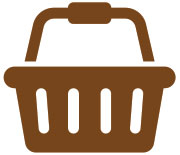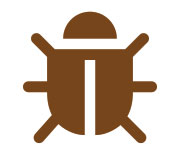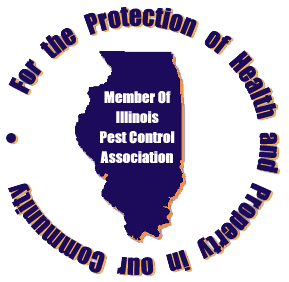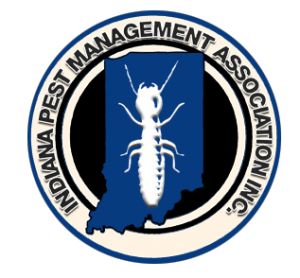Late summer and early fall is Yellow Jacket season in Indiana and Illinois. Yellow Jackets are easily identified by their black and yellow striping and are commonly noted in large numbers hovering around trash receptacles and dumpsters at fall festivals, picnic grounds, supermarkets and in residential areas. These are the “bees” that are especially attractive to sugars and are regularly noted swarming and entering unattended soda and beer cans thereby presenting a serious health risk to the consumers of these beverages.
The cycle of nest building and reproduction begins slowly each spring since it is only the mated queen who survives the winter by seeking shelter in a secluded location. She builds a tiny nest called a “carton” which contains a small number of “cells.” The nests are of a light weight, paper-like material made from wood fibers mixed with the queens salivary secretions. Within these cells she places and egg which eventually hatches into a larvae or maggot. The queen feeds and cares for the larvae until they enter the pupal or cocoon stage. When the adult (winged) workers emerge from the pupal stage they take over nest building duties and begin caring for the larvae. In this manner the colony begins to grow and by August the nests are approaching the size of a soccer ball.
Yellow jackets prefer to build their nests in secluded “void” areas to protect them from wind and rain and as such the “carton” is seldom visible. These nesting sites are easily identifiable on account of a constant “stream” of flying workers (performing their feeding and building duties) coming and going out of the opening used to access the nest. These insects are extremely protective of their nests and become highly aggressive when they perceive nearby activity as a threat to the colony. Yellow Jackets possess the ability to sting repeatedly and their venom has been known to cause intense pain, severe swelling and allergic reactions.
Yellow Jacket attacks are typically the result of an accidental encounter and can be divided into two categories: outdoor and indoor. Most instances of outdoor attacks happen when an unsuspecting homeowner or landscaper disturbs a nest that is at or near ground level. Since yellow jackets like to build their nests in rodent burrows and landscape timbers it is quite common that stinging episodes occur regularly during the course of lawn and garden maintenance. Other outdoor encounters occur where yellow jackets have a nest built within the exterior wall or attic of a home and maintenance activity such as carpentry work or painting near the exterior opening threatens the nest.
Indoor encounters and attacks can be quite unsettling to the homeowner who just prior to this activity was relaxing comfortably within the sanctuary of their home. It is quite typical that these insects will find openings around the exterior foundation of the home and build a nest within the walls or in the attic space. A few examples where these openings exist include but may not be limited to utility line entry points, poorly sealed windows, outdoor lighting receptacles and gaps between the soffit or overhang and the exterior siding. Once inside the walls the worker yellow jackets will tear away the drywall slowly for nest building purposes. The thinning drywall is further compromised by the moisture that exists within the nest itself, and often times mildew and mold will be visible on the ceiling in the area of the nest . When these insects eventually break through the ceiling the entire area will be swarmed with panic stricken, aggressive yellow jackets.
As the “dog days” of summer turn to fall stay ever vigilant for yellow jacket activity around your yard and on your house. Early identification is the first step towards eradication and the best way to prevent a surprise attack.








